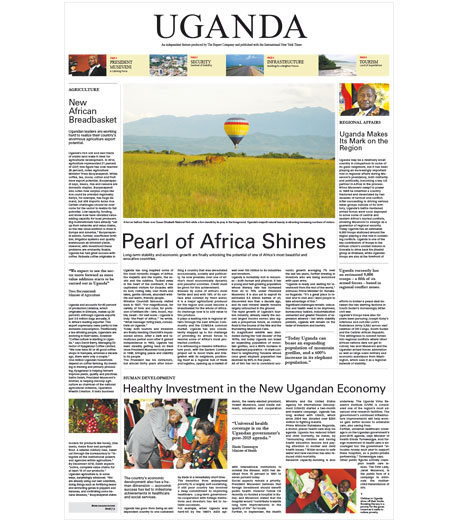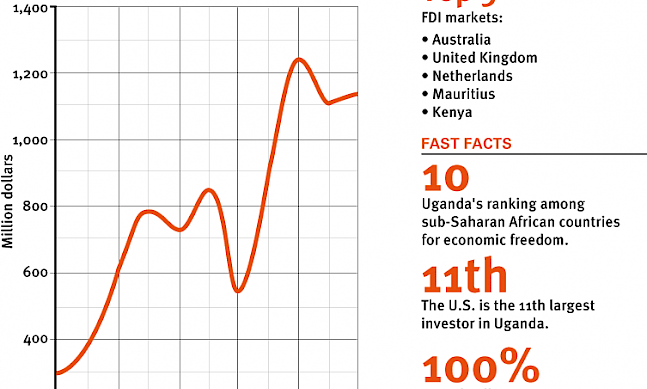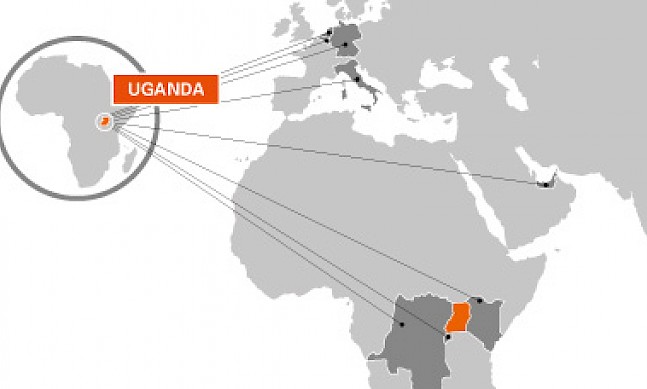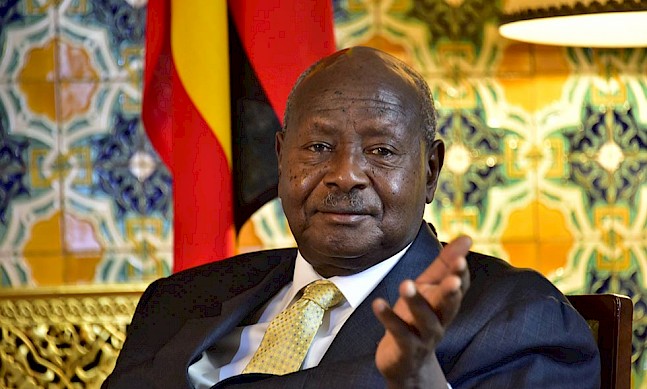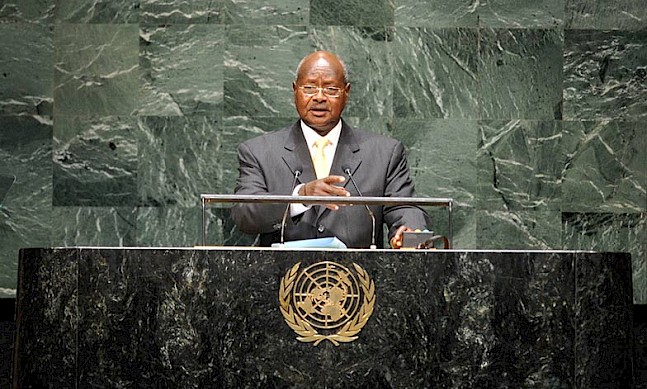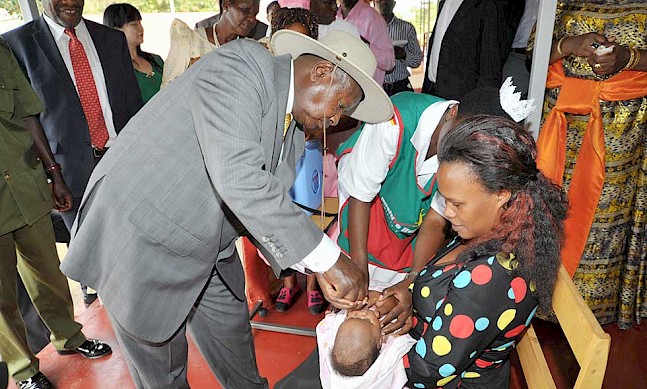Uganda’s National Social Security Fund (NSSF) was founded in 1985 and covers all employees in the private sector that are not covered by the government's pension scheme. As the largest investor on the Uganda Securities Exchange, the NSSF has a large economic impact on the country, and its total assets are equivalent to 5.6 percent of Uganda’s GDP. Richard Byarugaba, the fund’s managing director, talked to The Report Company about the NSSF’s role in Uganda’s ongoing development.
The Report Company: What impact do you expect to see from the proposed liberalization of the retirement benefits sector?
Richard Byarugaba: It’s still on the table. It’s in parliament. The main change would be that NSSF loses its monopoly on mandatory security. That would mean that other players would be allowed within the pensions space to compete with NSSF.
We think that the government has a responsibility to at least provide a basic pension by retaining something like the NSSF, and then allow people opt into a higher tier pension, provided by other players, if they wish. At the time this bill was proposed, it was based on the assumption that the NSSF was not being run properly, however we have strengthened the governance structure of NSSF by putting in a good board of trustees. The NSSF of today is a good, well-run scheme which protects individuals’ savings.
TRC: What challenges does Uganda’s pension sector face?
RB: There are 15 million Ugandans who are working. Of those, 2.5 million are in formal employment, and 12.5 million are in informal employment. The biggest problem is the informal sector. They have no pension and no social security. That is a big time-bomb. In 1985, when the NSSF was set up, the formal sector made up 80 percent of the working population. Today, it is only around 20 percent. This means that 80 percent of the population is totally without cover and that’s a big problem.
TRC: You recently unveiled plans to buy bonds of high growth potential start-ups on the Growth Enterprise Market Segment (GEMS). What is the thinking behind this?
RB: The stock exchange has only had 12 companies listed. The last one to list was Umeme in 2012, and that changed the market. We believe that there are a few young, strong companies that could drive the growth of Uganda. At the moment a lot of people don’t own shares. A lot of the savings people have is in real estate or livestock. We want to encourage more activity, so we decided to go into private equity.
We will identify small and medium sized enterprises which are ready to come to market but need that extra push before they become publicly-traded companies. They may need to improve their bookkeeping, for example, in order to list on the stock exchange. To give them that confidence, we provide them the strength of being a big organization by investing in them. Once the company has got to the stage of having a good valuation or market share, then we can go to the market, exit through the stock exchange and allow other Ugandans to come in. We see ourselves as angel investors in this regard. We are currently working with two or three such companies.
We are also working with the Uganda Investment Authority to identify new businesses. The idea is to create a fund whereby these businesses can borrow and then come to the market and create jobs.
TRC: What opportunities are there for you to offer products to the Ugandan diaspora, or other international investors?
RB: As part of the new pensions law, voluntary contributions will be allowed. We are testing the market for two items: a foreign currency product for those who might want to save in foreign currency or for those who are abroad looking for a way to invest in Uganda; and a real estate project. The idea will be to use the funds to build and then sell these houses. We have a housing finance bank; they offer mortgages and we can do the securitization of the mortgage.
“We will identify small and medium sized enterprises which are ready to come to market but need that extra push before they become publicly-traded companies.”Tweet This
TRC: What is your approach to human resources development?
RB: We found that we were spending a lot of money sending people aboard for training, so we decided to train our own people using an e-learning system. We brought on board several universities, including material from Harvard and Oxford. Now people are learning and they’re getting certification on the e-learning. That has reduced our costs by about 40 percent. Of course a lot of people would prefer to travel and learn face to face, but it’s catching on. Last time I checked about 60 percent of our people had used the system. We’re aiming for about 90 percent. With this approach, people’s work is not disrupted because instead of travelling outside they can learn while they are here.
TRC: How do you benchmark yourselves against other international pension funds?
RB: We benchmark ourselves against one scheme, the Employees' Provident Fund (EPF) of Malaysia. We’ve been there twice and we’re benchmarked against their systems. Their efficiencies are amazing. Our cost of administration as a percentage of assets under management is 1.3 percent. Malaysia’s is 0.5 percent. But when I joined the NSSF it was 3.5 percent, so I have brought it down. When I joined the fund, the cost to income ratio was in the region of 80 percent. That is at about 30 percent now. We’ve grown at a rate of almost 300 percent. When I came to the fund, it was worth 1.3 trillion shillings. Today, four years later, it is worth 5.2 trillion shillings. We have had phenomenal growth. The ratios have been really good and we’ve improved our compliance. When I came to the fund we had 800 staff; we have now less than 400, so we’re more efficient and we’ve brought down our cost of doing business.
TRC: What would you like to achieve during the remainder of your time in this position?
RB: I would like to leave NSSF in a state whereby it can compete with the rest of the market, once that market opens up. I’d certainly like to introduce the voluntary contribution products and then obviously the big projects I have mentioned. That would be my legacy: to see that these projects come to fruition, and that the fund is in a good, competitive position and can compete with the rest of the funds.
We are currently looking at infrastructure investments as a big part of our future. This includes hydropower dams and road projects as part of our asset classes. We have been in discussions with government to make sure that they can structure some products especially on the bonds side. This has already been done in Kenya and in Rwanda whereby they have designed special bonds that are issued by the central bank just for infrastructure development. We have the liquidity and the clout to push this through. We have been pushing the central bank and the ministry of finance and we think that it will come in one of the upcoming budgets.
TRC: The NSSF is the largest investor in Uganda. What would be your message to other investors?
RB: There is a good investment climate here. The fundamentals have been good for a very long time; the exchange rate has been kept stable, the returns are good, the risks are low, there’s a growing population and there is a growing middle class.
If you come in and set up a good business venture it’s most probably that we will be involved in it because we like to look for good opportunities which give our members a good return but also provide a liquidity environment so we can continue to do business.


